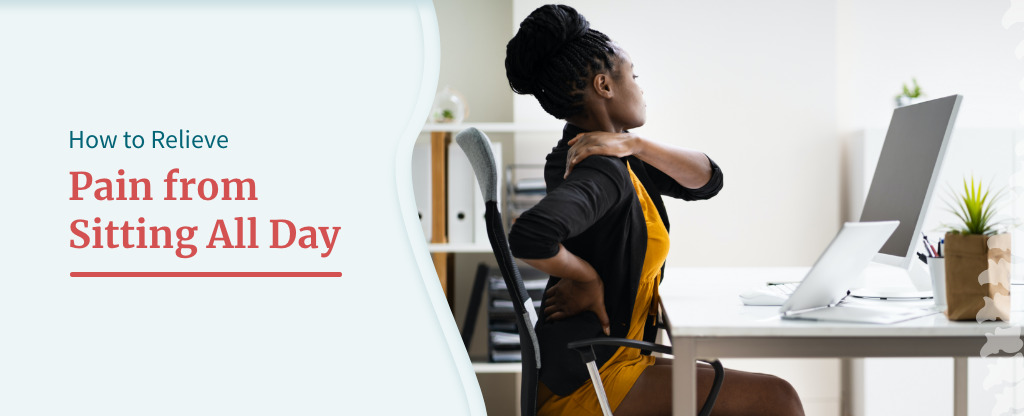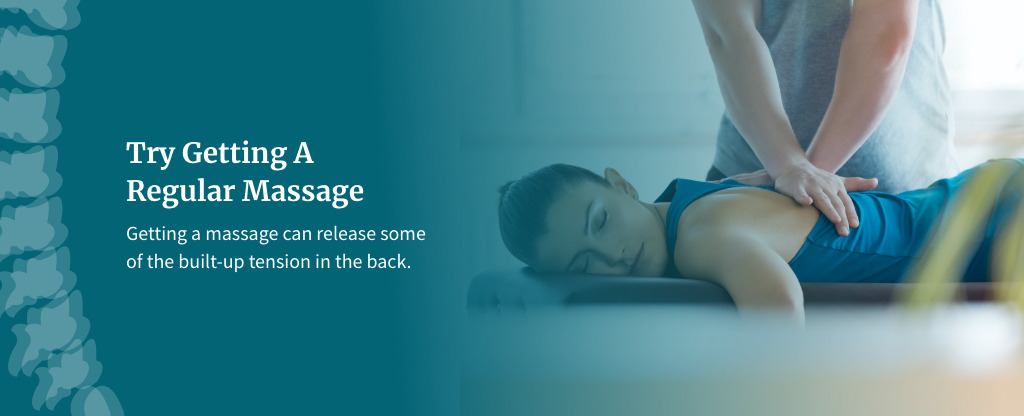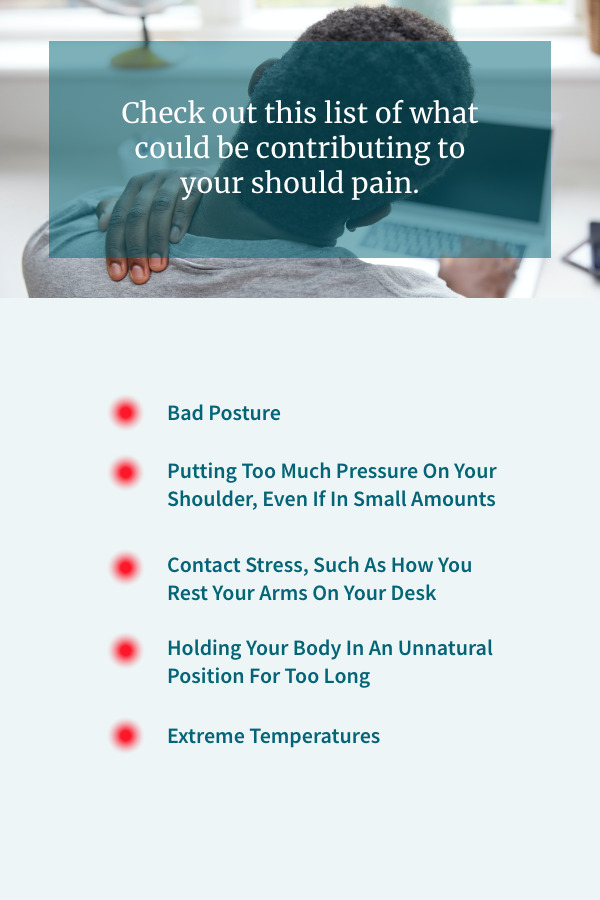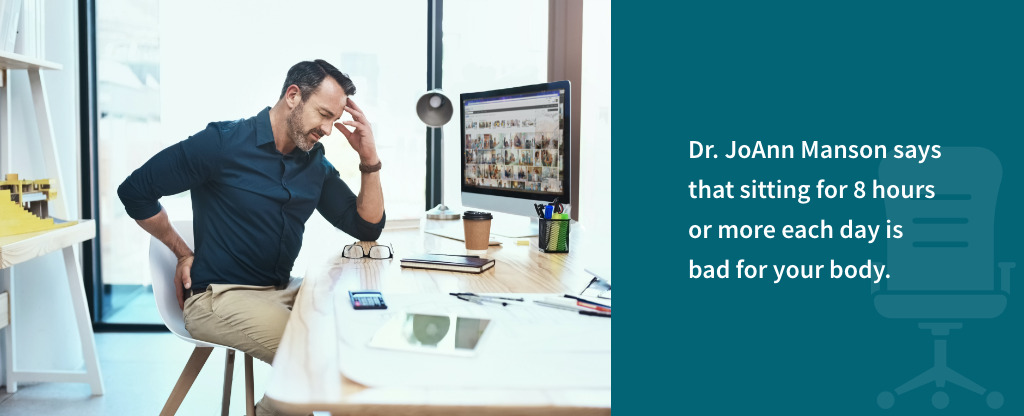OIP’s Temporary Response to Rise in COVID-19 Cases

As COVID-19 cases continue to rise, our team is working hard to ensure we can safely meet your orthopedic needs. Below is a list of temporary measures that will take effect immediately. As always, the health of our patients and our associates is the priority.
We are currently experiencing staffing shortages due to COVID-19. While we are trying to accommodate as many patients as possible, your wait time may be longer in both registration and clinical areas. Your time and your trust is important to us and we apologize for this temporary inconvenience. Thank you for your understanding.
1. The impact of COVID-19 on staffing levels also requires us to consolidate some team members, which means temporarily adjusting hours at some locations. See all the details below:
- The OIP Orthopedic Injury Clinic in Harrisburg will ONLY be open Monday through Friday from 8am – 5pm. Those who need immediate walk-in care can be seen at our OIP Orthopedic Injury Clinic in Camp Hill which will remain open Monday through Friday, 8am – 8pm, and Saturday through Sunday from 9am – 6pm.
- Hours may be limited at some of our other OIP offices. If we need to change the location of your visit, you will be contacted in advance by one of our team members.
2. We are asking all adult patients to come to their appointments alone. If you need a support person because of difficulty walking or understanding your care, please call us ahead to discuss. Anyone who is not a patient will be kindly asked to wait in the car.
If you have questions regarding an upcoming appointment or our COVID-19 policies, please don’t hesitate to contact us. Find more information about our COVID-19 response effort here.
Cast your vote for the cutest pet!
OIP is holding its annual holiday pet picture contest – and we need your help! Our amazing associates have submitted photos of their beloved furry (and not so furry) friends in hopes of being named ‘top dog’!
Visit this link to select your 5 favorite pet photos!

OIP’s Annual Reindeer Games will benefit two local organizations supporting central PA kids in need
Beginning November 15, Orthopedic Institute of Pennsylvania will launch its annual Reindeer Games, an effort to both celebrate its associates AND give back to the central PA community.
This year, the group will partner with CocoaPacks Toy Drive and the United Methodist Home for Children. OIP associates will participate in several challenges to raise important donations for these organizations, BUT patients and community members are invited to drop off donations, too! Learn more about how you can help us impact the lives of local children in need.

CocoaPacks Toy Drive, November 15 – December 3
CocoaPacks provides supplemental food and other support to local children in need to enhance overall wellness. The group’s vision is a world where all children have what they need to succeed. Learn more about them. At the start of the school year, there were 1,400-plus school-age children registered and receiving support from this program.
OIP associates (and patients!) are invited to donate any of the following items at any OIP location. Items needed, include:
- New, unwrapped toys (Consider items from the group’s Amazon Wish List)
- Holiday gift wrap, gift bags, tissue paper, bows and tape
United Methodist Home for Children, November 29 – December 17
The United Methodist Home for Children (UMHC) was founded in 1917 and today its Mechanicsburg campus serves approximately 35 children between the ages of 12-20 with safe, residential care and supports the broader community with services for youth and their families. Learn more about them.
OIP associates (and patients!) are invited to donate a $10 gift card to any of our OIP locations from any of the following:
- local restaurants
- Walmart, Target, Dick’s Sporting Goods, Dollar General and Staples
- grocery and convenient stores like Giant, Weis, Rite Aid and CVS
- Visa and Mastercard
We are privileged to partner with these two organizations and thank all of our associates and our patients for helping us brighten the holiday season for these special kids and their families!
How To Relieve Pain From Sitting All Day

Do you have an office job or one that requires you to sit for long periods of time? Or maybe even requires you to sit for the entire day? If you do, you are probably also familiar with the stress that puts on your body, such as back and neck pains. You may even worry about your posture.
Well, worry no more! The Orthopedic Institute of Pennsylvania (OIP) offers a number of services to relieve some of those pains, as well as provides proper care for the affected areas.
Back Pain
Back pain is one of the most common pains that results from sitting at a desk all day. There are two types of back pain: upper and lower. Each can be caused by different things, but both are pains you can get from sitting at your desk all day. Let’s take a deeper look at each one.

Upper Back Pain
There are 12 bones within your upper back. The first is at the base of your neck and the twelfth ends just below your ribcage. Upper back pain consists of any pain that occurs within this area.
Most of the time, upper back pain is caused by bad posture. While sitting at your desk, it’s easy to slouch over in your chair without realizing it. But try out these tricks to prevent those pains.
- Take regular breaks from sitting: Every once in a while, try standing up and walking around. This will relieve some of the stress put on your body from sitting all day, and it will also allow you to move other muscles in your body.
- Take stretch breaks: This is very similar to the first suggestion, but here, you want to make sure you are actually stretching your muscles so they don’t tighten up.
- Try getting a regular massage: Getting a massage can release some of the built-up tension in the back.
- Work with a physical therapist: A physical therapist can help you work on keeping your joints healthy and strengthening your muscles.
- Work on your posture: Focus on your posture, whether you’re sitting down or walking. This is huge in preventing back pain.
Most back pains can be fixed with simple lifestyle changes. However, if your pain persists, we’d love to meet you and check out those issues you’re having!
Lower Back Pain
Over 50% of Americans will experience lower back pain throughout their lifetime.
Lower back pain is pain experienced in the vertebrae known as L1 through L5. We have discs which are sacs that prevent your vertebrae from rubbing together. A common cause of lower back pain is bad posture, which puts strain on those discs.
Like upper back pain, lower back pain can probably be fixed by lifestyle changes, one of the most common being working on your posture. But there may be something more going on, such as:
- Sciatica: pain that runs from the base of the spine down your legs
- Herniated disc: pressure on the disc that causes it to reshape, which triggers lower back pain
- Muscle strain/lumbar strain: overuse of the muscles that causes pain to stretch into your buttocks (but not into the legs)
- Degenerative disc disorder: when discs in the lower back are damaged
If your back pain continues after trying to correct your bad habits or you’re worried you may be experiencing one of the conditions above, visit our Center for Spine Care in Camp Hill. Our physicians are able to treat most of our patients without the use of surgery.

Shoulder Pain
This may seem like a strange pain to have from sitting, but it definitely happens. Well, what could be causing shoulder pain at your desk job? Small, repetitive activities can place stress on the muscles in your shoulder, such as using a mouse or keyboard all day. In addition, check out this list of what could be contributing to your shoulder pain.
- Bad posture
- Putting too much pressure on your shoulder, even if in small amounts
- Contact stress, such as how you rest your arms on your desk
- Holding your body in an unnatural position for too long
- Extreme temperatures
Surprisingly, a lot of repetitive strain injuries (RSI) are actually computer-related. So study your everyday habits while at your desk or working on your computer and see if you’re making any movements that could be causing that shoulder pain.
What Can OIP Do for Your Shoulder Pain?
Once we figure out what is causing your pain, we can choose the best treatment plan for you. Here are some of the options:
- Rest: Resting your sore and hurting muscles can keep you from overusing the muscles long enough for them to begin healing.
- Physical or occupational therapy: There are always exercises and activities that can improve stability and help relieve some of that pain.
- Medications and/or injections: Certain medicines and injections can be used to treat pains that result from arthritis.
- Small surgical procedures: Some causes of pain may require a simple surgery. We can usually perform these types of procedures in a minimally invasive manner.
We prefer to visit the above methods to see if one of them will work, but sometimes, there is something more serious going on. If this is the case, a more in-depth surgery or treatment plan is the route we have to take. OIP will make sure it does what is best for you physically and financially.
Elbow Pain
Like shoulder pain, you wouldn’t expect that this kind of pain would come from sitting at your desk, but here we are. Maybe you lean on a desk all day, putting stress on your elbow and joints. Maybe you move your elbows in harsh ways all day while sitting at your desk. Whatever the case may be, take a look at these few tips for relieving pain.
- Rest: The most obvious answer for relieving pain is rest. Take the stress off your elbow. You could also be overusing it, which could be causing inflammation.
- Heat: Most of the time, you’re told to ice, but for elbow pain, applying heat could stimulate blood flow, which encourages healing.
- Stretching: Stretching sore muscles can help if maybe your muscles have just tightened up. Try stretching you arm out straight with your palm facing the ceiling. Slowly bring your fingers into your palms. Hold this for 30 seconds. Turn you arm over, where your palm is facing the floor, and repeat the stretch.
- Bracing: Wearing a brace over the affected area can keep the muscles in position and prohibit them from moving, which can aid the healing process.
If none of these work, OIP can help! We take your pain and recovery as seriously as you do, and we want to make sure that we take care of you the best way possible.
Hip Pain
The hip is the largest ball-and-socket joint in our body and is where the bones in the upper part of the leg connect to your body. The hip will support you while walking, running, or any other activity you may take part in. But the hip will also support you while you’re sitting. In fact, your hip bends to support your weight when you’re sitting down, which can put stress on the hip and cause you pain.
Sometimes, hip pain is just a result of sitting down for too long, so you may be able to stand, move around and stretch to relieve the pains. But sometimes, your hip pain could mean there is something more going on with your body.
The kind of pain you are experiencing and where you’re experiencing it can help you determine what the issue may be. Pains on the outer portion of the hip are usually related to your ligaments, tendons and/or muscles. But pains on the inner portion of the hip are usually tied to health issues related to your hip and its connecting joints. There’s also the possibility that your back pain has worked its way into your hip, known as referred pain.
Why Do I Have Hip Pains?
As with all pains related to sitting down for long periods of time, it could be a few different things.
- Bad posture: This puts strain on all parts of your body.
- Crossing your legs: Crossed legs can put stress on either hip and cause pain.
- Leaning to either side: Leaning one way or the other puts stress on your hips.
- Sitting unevenly: Sitting on an uneven surface can strain your hips.
There could definitely be something more serious going on, so if making these alterations while sitting doesn’t help, OIP can check out the hip to look for the cause. We can treat your pains at our Harrisburg location by trying some of our non-surgical methods.

Knee Pain
Pains in the knee can be a result of a previous injury, but they can also be overuse, wear and tear or maybe it’s just the way you’re sitting. While you may not think you would be putting stress on your knee while sitting, you definitely can. So what could be causing those knee pains?
- Sitting for too long: Dr. JoAnn Manson says that sitting for 8 hours or more each day is bad for your body.
- Sitting in an abnormal position: If you’re sitting with your knees in random positions, it could be putting unnecessary stress on them.
- Furniture: If you’re sitting on a chair or couch with an odd design, it could be causing you to strain your muscles and body parts.
These are the most common reasons you could be having knee pains in relation to sitting at your desk all day. However, as always, there can definitely be an underlying condition causing these pains. If you feel you need to have your knees examined, our physicians can take a look to determine the problem.
Most people tend to avoid doctors when it comes to knees because they believe surgery is the only way to fix the pain. However, our physicians will work through all non-surgical treatment methods before surgery. We will do our best to find a method that works for you. We won’t pressure you into surgery unless we believe it is the only way to help you relieve those pains.
How Can I Alleviate Knee Pains While Sitting?
There are some things you can work on to prevent knee pains.
- Pick an office chair that supports your spinal curves. This can help alleviate some of those other pains from sitting as well.
- Adjust your chair so that your feet are flat on the floor and your thighs are parallel to the floor. This will help with your posture and make sure your knees aren’t bent at ridiculous angles. If for any reason you are unable to adjust your chair to accomplish these tasks, consider some sort of footrest. Your feet need to be flat on a surface below you.
- Adjust your armrests so that your arms can rest in a relaxed position.
- Make sure your desk and chair allows room for your knees, thighs and feet.
- When working at your desk, make sure your work is directly in front of you and not too far away. This will keep you from moving into odd positions and putting stress on your body.
Another idea, which may seem very odd, is to look into a standing desk. This keeps you from sitting too long and bending your body at unnatural angles.
If these adjustments don’t help with your pain, reach out to our staff so we can evaluate your pains and struggles.

Pain Management
Now let’s talk about how to manage your pain. It’s important to note that pain is a symptom. Usually, your pain means that there’s something underlying. In this case, the underlying problem is how you’re sitting while at a desk, at work, etc.
If you’ve tried our tips and tricks previously mentioned and your pain is still an issue, contact us today! We will take a look to make sure you don’t have a more serious problem, such as arthritis or chronic joint pain. Whether it is something more or just pain associated with sitting at a desk all day, we will come up with a plan to treat your pain.
You can call our main line (717) 761-5530 or our 24/7 emergency advice hotline (855) OUCH OIP ((855) 682-4647. You can also request an appointment by filling out our online form. We do welcome walk-ins though, so you can visit our Camp Hill or Harrisburg Orthopedic Injury Clinic and see a physician today!
OIP to collaborate with Captial Area Soccer Association
We are excited to announce our recent collaboration with the Capital Area Soccer Association (CASA) for the Fall 2021 season. CASA is a youth soccer organization in Harrisburg, Pennsylvania. Its mission is to promote, foster and perpetuate the game of soccer while fostering the physical, mental and emotional growth of area youth through the sport of soccer. CASA is affiliated with Central Pennsylvania Youth Soccer League (CPYSL), Atlantic Premier League (APL), and Elite Development Program (EDP).
Our OIP team will provide licensed athletic trainers to perform free, on-field injury screens for participating athletes every Tuesday evening. All CASA players (travel, recreational, coaches and staff) are eligible. Licensed athletic trainers will screen for sprains, strains and acute pain and help athletes formulate a plan of care. No appointment is needed. Athletes can simply visit the OIP tent on Tuesday evenings.
We look forward to supporting CASA coaches, families and athletes with outstanding orthopedic care!

OIP voted Simply the Best in Harrisburg
Orthopedic Institute of Pennsylvania was ONCE AGAIN named SIMPLY THE BEST – in several categories!

Simply The Best – Orthopedics
Simply the Best – Pain Specialist Clinic
Reader’s Choice – Physical Therapist
Reader’s Choice – Place to Work
Simply the Best is more than an award, it’s a vote of confidence from our patients and our community. Over the past 50 years, OIP physicians have cared for generations of patients – trust in the group has passed from parent to child to grandchild. We feel that these generations of satisfied patients are the best and strongest sources of referral to our practice. Our physicians never take for granted the trust and confidence of our patients.
Click here for access to the the full list of winners.
OIP Named Best in Cumberland County
The Sentinel readers recently named us the Best Orthopedic Specialist of Cumberland County! Of 62,000 votes from over 4,000 readers, Orthopedic Institute of Pennsylvania earned the top spot. Thank you Cumberland County for your trust in us. Congratulations to all of the ‘Best Of’ Winners – check them all out here.

New OIP Carlisle office opens
Orthopedic Institute of Pennsylvania Opens New Facility in Carlisle
New 30,000 square-foot facility increases orthopedic access to Carlisle and surrounding communities
CARLISLE, PA (June 9, 2021) – The Orthopedic Institute of Pennsylvania (OIP) is pleased to announce the opening of its new Carlisle facility, offering neighbors in and around the area with increased access to orthopedic specialists and services, including general orthopedic care, pain management, podiatry, rheumatology, MRI and physical therapy.

This newly constructed, 30,000 square-foot facility is located at 250 Alexander Spring Road – directly across the street from the practice’s previous Carlisle office. Currently, 11 OIP physicians are available for appointments in Carlisle.
Patients from the Carlisle area, and surrounding communities of Newville, Shippensburg, Mechanicsburg, Boiling Springs, Mount Holly Springs, Chambersburg, Gardners, Shermans Dale, Dillsburg and more, can find expert orthopedic care minutes from home.
“We broke ground on the new Carlisle facility roughly two years ago, and we are thrilled to begin seeing patients there this month,” says Will Thompson, OIP’s CEO. “This modern, expansive office offers patients in and around the growing Carlisle region a convenient orthopedic solution, close to home – and access to a broader range of specialists and services.”
The following physicians are available for appointments in Carlisle:
The practice also has plans to open another Orthopedic Injury Clinic at this site, offering extended walk-in hours seven days per week. OIP Ortho Injury Clinics provide access to specialized care during times which can be especially helpful to those with busy weekday schedules or to treat injuries sustained during a weekend that used to require a trip to the emergency room. Patients can get treated readily by an orthopedic provider in an OIP facility instead of waiting for hours in an emergency room.
OIP has seven locations throughout the central Pennsylvania area, including Camp Hill, Carlisle, Harrisburg, Hershey, Newport and Millersburg. To schedule an appointment at any OIP office, please call (717) 761-5530 or visit www.OIP.com. For 24/7 urgent orthopedic advice and care, call (855) OUCH-OIP.
###
The Orthopedic Institute of Pennsylvania (OIP) is a physician-owned practice, which means decisions about care are always made in the exam room between patient and provider – not influenced by decisions in a boardroom. In OIP’s 50 years of service to the central Pennsylvania community, the group’s primary business objective has been and continues to be exceptional patient care. To learn more, visit www.OIP.com.
Our NEW Millersburg office is OPEN
Orthopedic Institute of Pennsylvania Expands Millersburg Presence
MILLERSBURG, PA (June 1, 2021) – The Orthopedic Institute of Pennsylvania (OIP) is pleased to announce the opening of its new Millersburg facility, offering neighbors in and around the area with increased access to orthopedic specialists and services, including general orthopedic care, podiatry, and physical therapy.
This newly renovated, 7,500 square-foot facility is located at 75 N. Evelyn Drive – only a short drive from the practice’s previous Millersburg office. Patients from the Millersburg area, and surrounding communities of Halifax, Lykens, Elizabethville, Williamstown, Tower City, Dalmatia, Wiconsico, Gratz, Herndon and more, can find expert orthopedic care minutes from home.
The Millersburg office will also soon be home to OIP’s third Orthopedic Injury Clinic, offering extended walk-in hours seven days per week. OIP Ortho Injury Clinics provide access to specialized care during times which can be especially helpful to those with busy weekday schedules or to treat injuries sustained during a weekend that used to require a trip to the emergency room. Patients can get treated readily by an orthopedic provider in an OIP facility instead of waiting for hours in an emergency room.
“We are pleased to open our new Millersburg office and expand our services to this region,” says Will Thompson, OIP’s CEO. “This new facility offers patients a convenient orthopedic solution, close to home – and access to a broader range of specialists and services.”
The following physicians are available for appointments in Millersburg:
Raymond Dahl, D.O. – Dr. Dahl has been serving the Millersburg community for many years and provides care for all general orthopedic problems. He has a special interest in joint replacement and spine surgery. He received his medical degree from the West Virginia School of Osteopathic Medicine, where he graduated with honors in the top 10 percent of his class. He completed his residency in orthopedic surgery at Pinnacle Health System before joining OIP in 2003.
Christopher Schank, D.P.M. – Dr. Schank is a board-qualified podiatric surgeon with special interest in limb deformity, Charcot reconstruction, advanced ankle instability, arthritic conditions of the foot and ankle, sports related injuries, foot reconstructions and ankle replacement. He graduated from Lebanon Valley College with the highest honors, and athletically earned membership into the MACC All-Century Baseball team, receiving academic All-American status. Dr. Schank completed his graduate education at Penn State Hershey College of Medicine, then went on to receive a Doctorate of Podiatric Medicine from Kent State University College of Podiatric Medicine. He later completed his Podiatric Surgical and Reconstruction residency at Henry Ford Macomb Hospital in Clinton Township, Michigan.
OIP has seven locations throughout the central Pennsylvania area, including Camp Hill, Carlisle, Harrisburg, Hershey, Newport and Millersburg. To schedule an appointment at any OIP office, please call (717) 761-5530 or visit www.OIP.com. For 24/7 urgent orthopedic advice and care, call (855) OUCH-OIP.
###
The Orthopedic Institute of Pennsylvania (OIP) is a physician-owned practice, which means decisions about care are always made in the exam room between patient and provider – not influenced by decisions in a boardroom. In OIP’s 50 years of service to the central Pennsylvania community, the group’s primary business objective has been and continues to be exceptional patient care. To learn more, visit www.OIP.com.
OIP 50th Message featured in The Sentinel
Orthopedic Institute of Pennsylvania was recently featured in The Sentinel, including quotes from the group’s CEO Will Thompson on the group’s 50 year history and its commitment to remaining independent and accessible to patients. Find it online here, or read below.
Much has changed in our healthcare community over the past five years – private practices consolidating, selling, and becoming part of larger hospital groups, and insurers determining where patients can go for treatment. Despite these changes, Orthopedic Institute of Pennsylvania (OIP), now celebrating its 50th year of service to the Greater Harrisburg area and surrounding communities, has remained independent and accessible to patients.

When OIP was established in 1971, not many could have imagined that it would become the last remaining independent orthopedic group in Harrisburg; moreover, one of the few remaining independent groups throughout the country.
“We have always credited OIP’s success to our emphasis on personalized care. Our staff and providers are very service-oriented, and that has been our philosophy for 50 years,” shared Will Thompson, CEO. “When we decide to add a physician to the group, we make sure that he or she is not only a good doctor, but a good person. Yes, they are experts in the field, but our physicians are also personable and truly care about the patients they treat – that is evident.”
One of the ways in which the practice remains accessible to patients is by accepting all major insurances, including Highmark and UPMC Health Plan. OIP is not constrained by some of the parameters that affect other practices because it works with both Penn State Health System and UPMC. OIP physicians have operating privileges at hospitals that are affiliated with both networks, including its own outpatient surgery center.
OIP’s practitioners include experts in hand, wrist and upper extremity surgery; foot and ankle surgery; arthroscopic shoulder, elbow and knee surgery; hip and knee joint replacement and revision surgery, spine surgery, pain management, rheumatology and podiatry.
The practice was the first in the area to open an orthopedic urgent care offering extended walk-in hours seven days per week to ensure the most convenient care possible. Currently located in the Camp Hill and Harrisburg offices, and coming soon to our new Millersburg office, the OIP Ortho Injury Clinics provide access to specialized care during times which can be especially helpful to those with busy weekday schedules or to treat injuries sustained during a weekend that used to require a trip to the emergency room. Now patients can get treated readily by an orthopedic provider in an OIP facility instead of waiting for hours in an emergency room. Additionally, Orthopedic Institute of Pennsylvania offers many on-site services, including Physical Therapy, MRI, DME, Pain Management, Rheumatology, and Podiatry.
Over the past 50 years, OIP physicians have cared for generations of patients – trust in the group has passed from parent to child to grandchild. “We feel that these generations of satisfied patients are the best and strongest sources of referral to our practice,” shared Thompson. “Our physicians never take for granted the trust and confidence of our patients.”
As a physician-owned practice, decisions about care are always made in the exam room between patient and provider – not influenced by decisions in a boardroom. OIP’s primary business objective has always been and continues to be exceptional patient care. The group believes this philosophy will see them to another 50 years of service to the community.
To learn more or find a physician near you, visit www.OIP.com or call us at (717) 775-7710.


